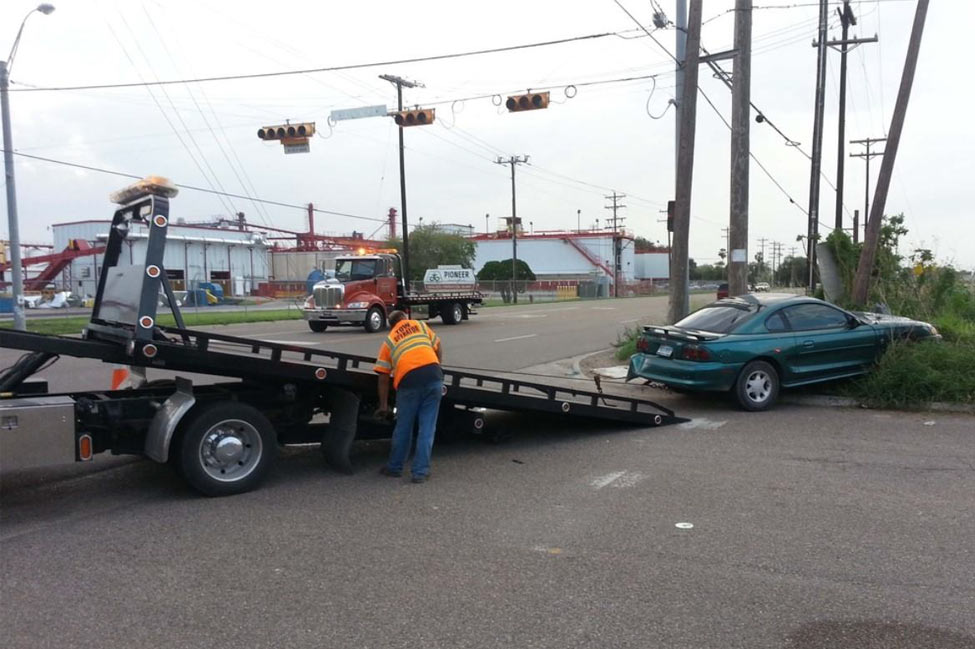How to respond to online reviews.
For towing company owners, learning how to respond to online reviews, both good reviews and bad reviews can help you attract customers and grow your business. While it may seem that responding to good reviews is easy, using the strategies I outline here will ensure your response is always professional and can even help you increase your business. I also provide a couple of tricks that can help you increase the chances of getting a bad review removed.
When someone needs a tow, more likely than not, they first want to know what other people think about a particular company. So, they begin by looking at the company’s online reviews. They’ll look at the star aggregate, and if the towing company in question has 5-stars and more than 30 reviews, that’s usually where they stop. They figure that there’s no need to read any of the reviews because they’re all good.
However, if the towing company being scrutinized has less than a 5-star aggregate rating, a motorist may investigate a little deeper and read some of the reviews. And when they click on the reviews link on your Google Page, Google defaults to the “most relevant” reviews being shown at the top.
The way Google determines which reviews are the most relevant is based on the consensus of the existing reviews. Basically, if you have 192 reviews and a 4.7-star aggregate, Google rates your business as good rather than bad, so the most relevant reviews for your business will be the 5-star ones. This is good news because most motorists only read one or two reviews, and that’s it. Of course, Google also provides the option of filtering by lowest, highest, and newest reviews, which is one reason why you want to respond to all reviews.
How to respond to online reviews that are positive.
If you are proactive and have a bunch of 5-star reviews, Google’s going to point people to your good reviews first. And since most motorists are in a hurry and only read one or two reviews, responding means they’re going to read your response as well. Responding to reviews allows people to see that you’re a caring business owner, not a greedy SOB who couldn’t care less about people. It gives prospective customers a glimpse into how the owner feels about his customers.
Below is an example of a positive online review and one way you could respond.
Positive review: Had an amazing experience with your towing company, I called and spoke to Dave, and he sent a driver my way immediately. The driver, Jim, made it to me in 20 minutes and was very nice and professional. He loaded my car in 5 minutes and made sure I made it to the tire shop before they closed! Highly recommend them!
Molly Huggins
Response: Molly, thank you for taking the time to leave us such a great review. While we may not always be that quick to respond, we do try to go out of our way to get our customers the help they need in a timely manner. Hope you have a great day, and thanks again.
Owner: XYZ Towing
Of course, you could simply respond by saying, “Thank you, we’re glad we could help.” But a more elaborate response like the one above, in your own words (including misspells and idioms), gives prospective customers a small but authentic taste of your personality.
Allowing people into your world is a very important part of growing your business. People do business with people they know, like, and trust. And when they see that you’re just like them, that you have a family and responsibilities, and that you’re not perfect…they’re more likely to do business with you.
Below is an example of a negative online review and one way you could respond.
Negative Review: It is a headache to deal with these people, they make the problem bigger than what it’s got to be. They take their sweet time and keep you on hold when trying to find the whereabouts of your vehicle, after all it benefits them the amount of time a vehicle stays in their possession smh.
Billy Wales
Response: Billy, sorry to hear you had a bad experience attempting to find your vehicle. We make every effort to ensure our customers aren’t required to wait on hold for an extended period. Please call me so that I can get more information and get you what you need 123-456-7890.
Owner: XYZ Towing
When responding to a negative review, your first instinct is to respond in kind. Your knee-jerk reaction might be to say, “Billy, we couldn’t find your car immediately because when you were arrested, the police had us tow it to the police station. So, it wasn’t showing at any of our locations.” Oh, the sweet online justice that would give us. But, if the goal is attracting prospective customers, I suggest you respond strategically.
Below are my rules for responding to negative online reviews.
- Don’t make excuses.
- Leave out the snarky comments.
- Identify and address the main issue only. (don’t comment on every wondering complaint)
- If you made a mistake, admit it.
- Don’t get pulled into an argument.
- Apologize and offer to help.
- Provide the business phone number (not your personal number).
When you respond to negative reviews following these rules, not only are you demonstrating to prospective customers that you run a respectable towing business, but you’re also leaving the door open for ongoing dialogue with the person who left the bad review. With ongoing dialogue, there’s always the possibility that you can solve the person’s problem and get them to remove the bad review.
Responding and flagging bad online reviews
In a perfect world, you wouldn’t have to respond to reviews from people who don’t understand the value of a dollar, are underinsured, or don’t obey parking regulations. You could just flag the review and tell Google to remove it. Unfortunately, when dealing with the online world, Google makes the rules. And getting Google to remove a review by reporting it to them is next to impossible. However, if you respond to a negative review that goes against Google’s guidelines and then report it to Google, there’s a higher probability that they’ll remove it.
If you believe that someone has violated Google’s guidelines, you can flag the review by clicking on the three dots next to the review and report it to Google. Google offers nine reasons why you may believe the report goes against their guidelines.
- Off Topic: The review doesn’t pertain to an experience at or with this business.
- Spam: The review is from a bot, a fake account, or contains ads and promotions.
- Conflict of Interest: The review is from someone affiliated with the business (disgruntled. employee) or a competitor’s business.
- Profanity: The review contains swear words, has sexually explicit language, or details graphic violence.
- Bullying or Harassment: Review personally attacks a specific individual.
- Discrimination or Hate Speech: Review has harmful language about an individual or group based on identity.
- Personal Information: The review Contains personal information, such as an address or phone number.
- Not Helpful: Review doesn’t help people decide whether to go to this place.
There’s also the option to “Report a Legal Issue.” But going this route to get a review removed would require you to hire an attorney to determine if the review defames you or your business. And you may even need to get a court order saying the review is unlawful. Since these are both time-consuming and costly, going the legal route should only be reserved for extreme cases.
When you respond to a review that you are also flagging to have removed, you’ll want to ensure that the review meets one of the requirements for removal. For example, if someone leaves you a review, but you don’t have any record of ever having done business with the person, you’ll choose option one (Off Topic). But before you flag the review, provide a response.
Owner Response: “I’m sorry to hear you had a bad experience, but we don’t have any record of providing towing service for you. Please check your records, as I think you were intending to leave a review for a different towing company. Thank you.”
Owner: XYZ Towing
When you flag a review for removal, Google’s automated system scans the review and looks for anything that might go against their guidelines. When you respond to a review, then flag it for removal, their automated system scans both the review and your response. And while I don’t have any proof that this is the case, I believe that a well-thought-out response from the business owner is reviewed by a human. Which means you may have a better chance of getting the review removed.
One last thing on getting bad reviews removed. Again, I don’t have proof that this is the case, but from my experience, I believe Google’s algorithm takes into consideration the aggregate and consensus of your existing reviews to determine whether or not to remove a flagged review. Meaning if you have 192 reviews with a 4.7-star aggregate when you respond and flag a review for removal, you have a higher chance of getting the review removed than you would if the aggregate was 3.4. This is another reason why you should constantly be asking for reviews. The more 5-star reviews you get, the higher your aggregate.
If you made a mistake, admit it and move on.
Sometimes things don’t work out as you intended. Maybe you missed your eta by a little or a lot, and the customer was required to wait much longer than expected. In these instances, while it’s difficult to determine if the motorist will be motivated to leave a bad review, it’s better to get in front of the issue. Admit the mistake and provide specific reasons (not excuses) why it’s taking longer to get a tow truck to them and keep them updated. If you’re not doing this, you should. Good communication can stave off bad reviews.
However, even with 15-minute text updates or phone calls, you can still end up with a customer who’s dead-set on leaving you a bad review. And you can usually tell by the anger in their voice or by the words they use that it’s apparent they’re going to vent that frustration somewhere.
When you have someone who’s angry, gestures work better than words to calm them. Have your driver offer a couple of bottles of water or give them a discount on your services. If they’re waiting for a ride, wait with them. In short, ensure that they are safe and have everything they need. Who knows, with this level of service, instead of leaving a bad review, they may leave you a good one. The goal is to attempt to make up for the inconvenience they experienced.
Lastly, if your company has made a mistake and a customer does leave you a 1-star review, your response should be conciliatory. You should admit the mistake and apologize. You may even want to agree and amplify. Below is an example of this type of response to a negative review.
Owner Response: Yes, we really dropped the ball with your service today. We said we would be there in 45 minutes, and it took us 1.5 hours to get to you. Having car problems is a huge interruption in your day, and waiting longer than expected for a tow truck to arrive is agonizing. I sincerely apologize to you and your family. And, if you would be so kind, I would like the opportunity to make it up to you. Please call me at 123-456-7890.
Owner: XYZ Towing
When you admit your mistakes, you’re not admitting that your company is horrible or that you provide bad service. In fact, admitting that you made a mistake stresses the importance that you place on providing good service. And when you respond this way, you’re letting everyone who reads your response know that you sincerely value their time.
Summary
Since motorists read what others have said about your company, you should always respond to your reviews, both good and bad. This is especially important if you don’t have 30 reviews and a 5-star aggregate. Responding to positive reviews can give the impression that you’re a caring business owner who wants to ensure that his customers are always happy. And, responding to negative reviews, in most cases, should be conciliatory and offer solutions.
Pro Tip #1: When one or more people flag or report a negative review, it may prompt Google to remove it.
Pro Tip #2: When your driver is unable to make a given eta, phone call updates work much better than texting.






Leave A Comment